Just as we may need to brush up on migrant birds that arrive during April, it’s useful to take a refresher course in spring wildflowers. While primroses and lesser celandines do not present too many problems, some of our commonest wildflower species are confusingly similar. Is that violet a dog, or a sweet?
For our identification parade we’ve selected five spring species pairs (and one triplet) that have the potential to perplex. For many plants you don’t need to know obscure terms or precise measurements: the habitat, location and general ‘jizz’ of the species are good guides. Oxlips, for example, are confined as natives to south-east England and you’re unlikely to find them in the wild elsewhere.
However, plants of the same species can vary in height, robustness and even flower colour, depending on the shade, nutrients and moisture available. Typical early forget-me-not is a much smaller plant than field forget-me-not, but occasionally it is quite luxuriant, so you need to measure the flowers and the length of the corolla tube formed at the base of the petals. But for most of the flowers here, you’re fine with the naked eye.
All illustrations by Felicity Rose Cole
Field forget-me-not (Myosotis arvensis)
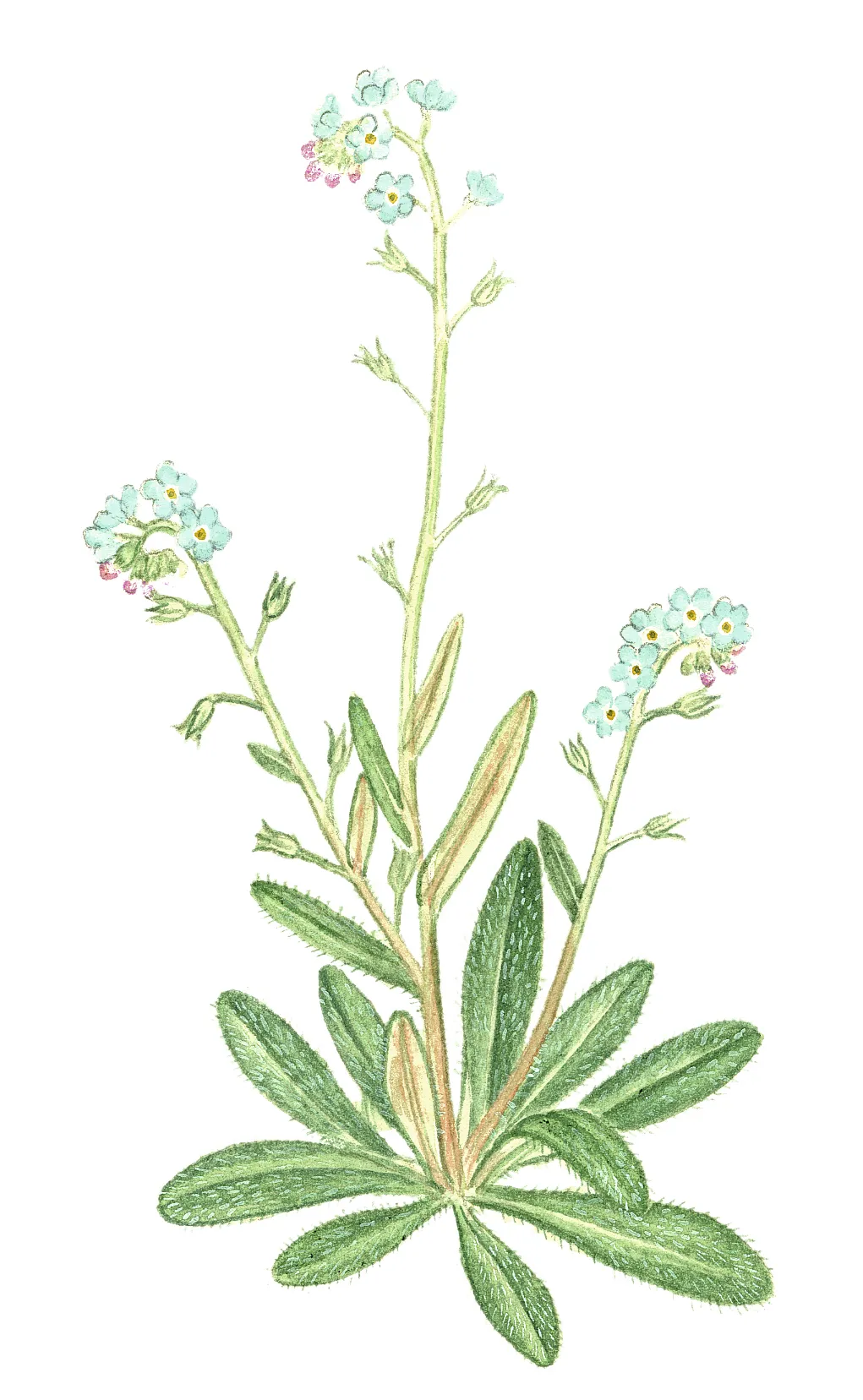
The most common of our wild forget-me-nots. Present on arable land, roadsides and even sand dunes, this pretty plant is as often found popping up among our garden flower beds, where its bright sky-blue flowers (pink when in bud), measuring just 5mm, rival those of its cultivated neighbours.
Generally annual, though sometimes biennial or perennial, field forget-me-nots are distinguishable by their oblong, hairy leaves and erect flower stems. Plants grow to about 40cm and flower from April right through to September.
Common and widespread.
Early forget-me-not (Myosotis ramosissima)
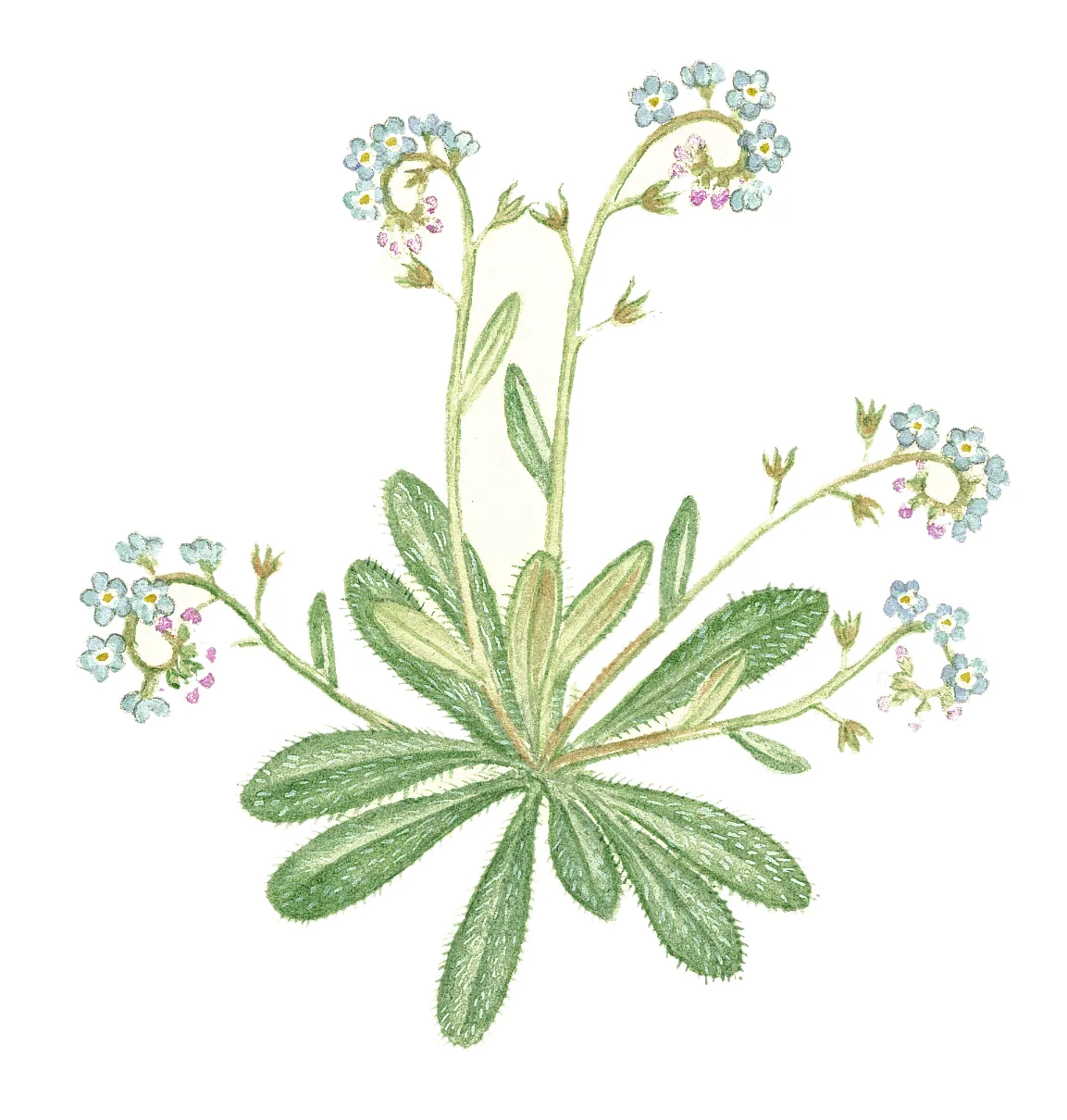
Less common than the field forget-me-not, the early variety has a stricter preference for rocky and dry places, such as sand dunes. It is also much smaller, with tiny 1-3mm blue flowers on stems that fall about in a prostrate manner. Often the plant is only 2-3cm high.
Importantly, as its name suggests, it usually flowers earlier than local field forget-me-nots, ending by June.
Local: easy to see in some spots.
Alternate-leaved golden saxifrage(Chrysosplenium alternifolium)
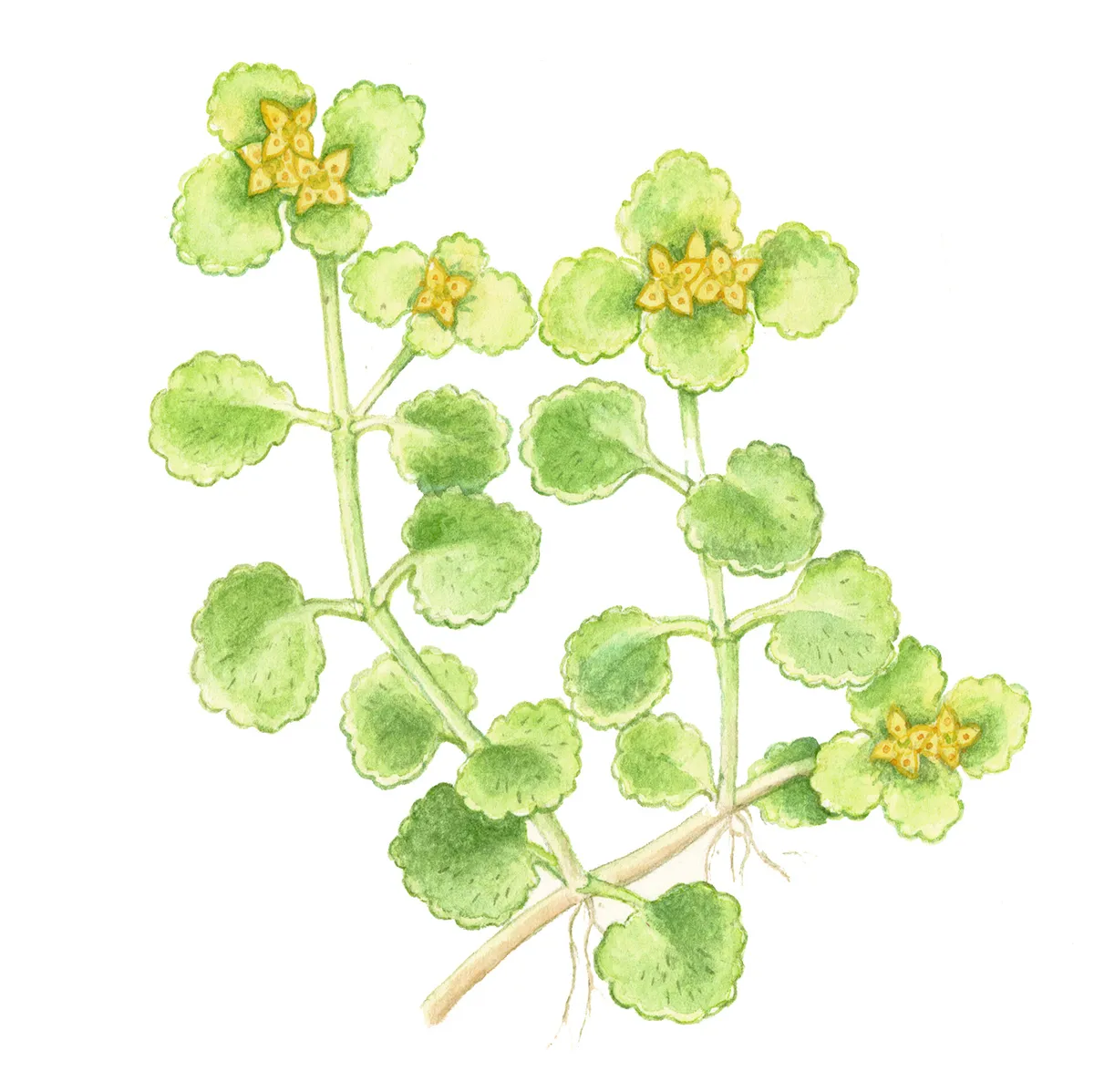
This is a low, creeping perennial that likes wet places: marshes, stream-sides, bogs and damp, open woodland. It forms mats of densely clustered, acid-green leaves which are blunt-toothed and spaced alternately.
Flowers are without petals but colour is provided by yellow-green sepals and bracts with bright yellow anthers. These appear from April to July.
Less common than its opposite-leaved relative, it prefers alkaline soil.
Local: easy to spot in some spots.
Opposite-leaved golden saxifrage (Chrysosplenium oppositifolium)
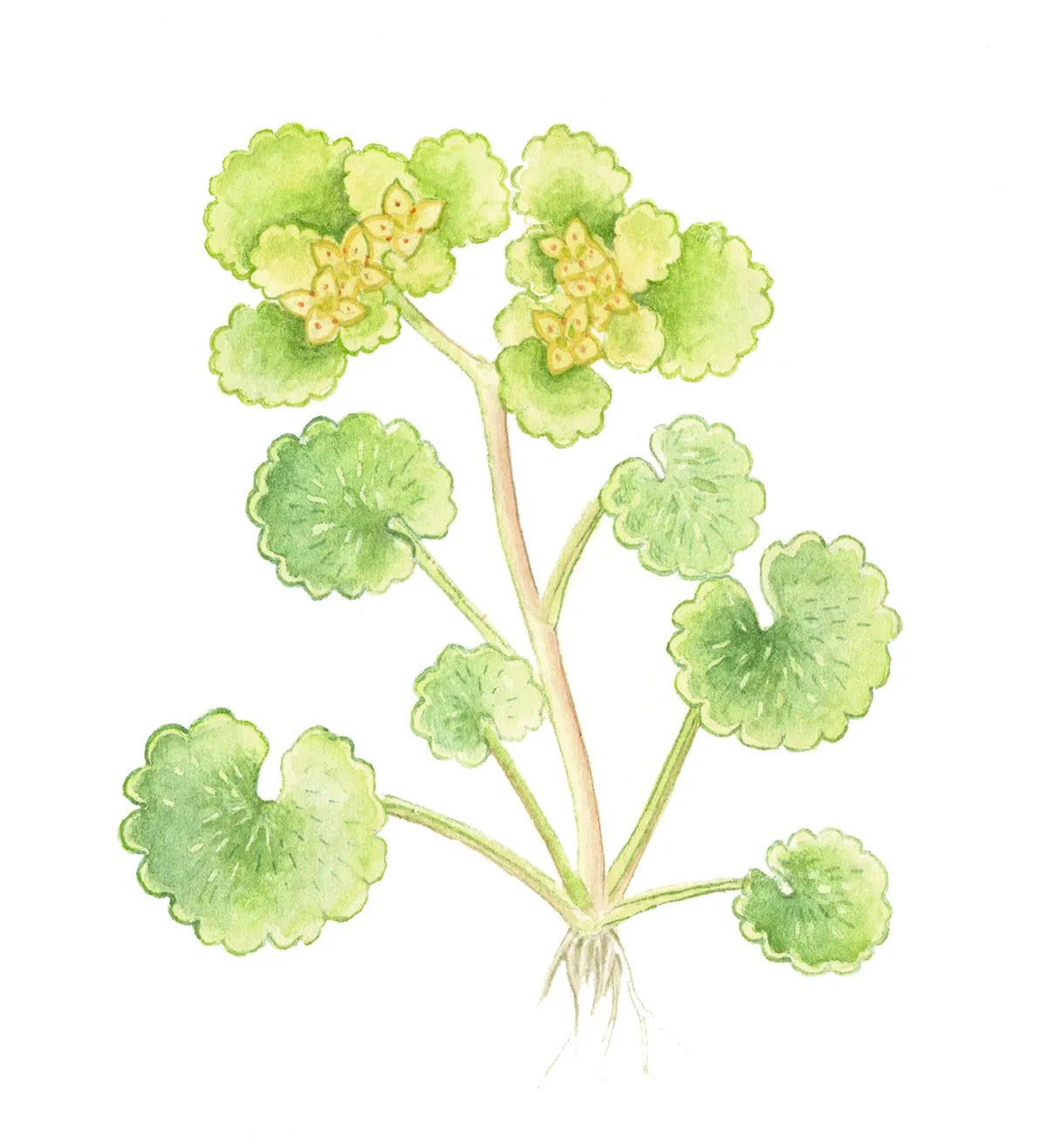
Found throughout western Britain, but scarcer in the east. Like the alternate-leaved common saxifrage this is a water-lover. You will find it adding golden colour to many a boggy place – especially on acid soil.
Its leaves are paired, less round and more bluntly toothed than those of its alternate-leaved cousin. It’s also more common and widespread, so sometimes referred to simply as golden saxifrage.
Look out for its flowers from March to May.
Local: easy to see in some spots.
Cowslip (Primula veris)

A much-loved plant with fragrant, pendulous, deep-yellow flower clusters that nod to one side. It looks similar to a primrose but has long, downy stalks reaching 30cm, and flowers are brighter and smaller with orange markings in their centre. The leaves are smaller too, narrowing at the base.
Its common name belies its dainty appearance – thought to be derived from ‘cow slops’ in reference to a favoured growing spot. It can actually be found in a range of places from grassy habitats to scrub, open woodland, banks and road verges. Its cheery flowers are seen from April to May.
Local: easy to see in some spots.
Oxlip (Primula elatior)
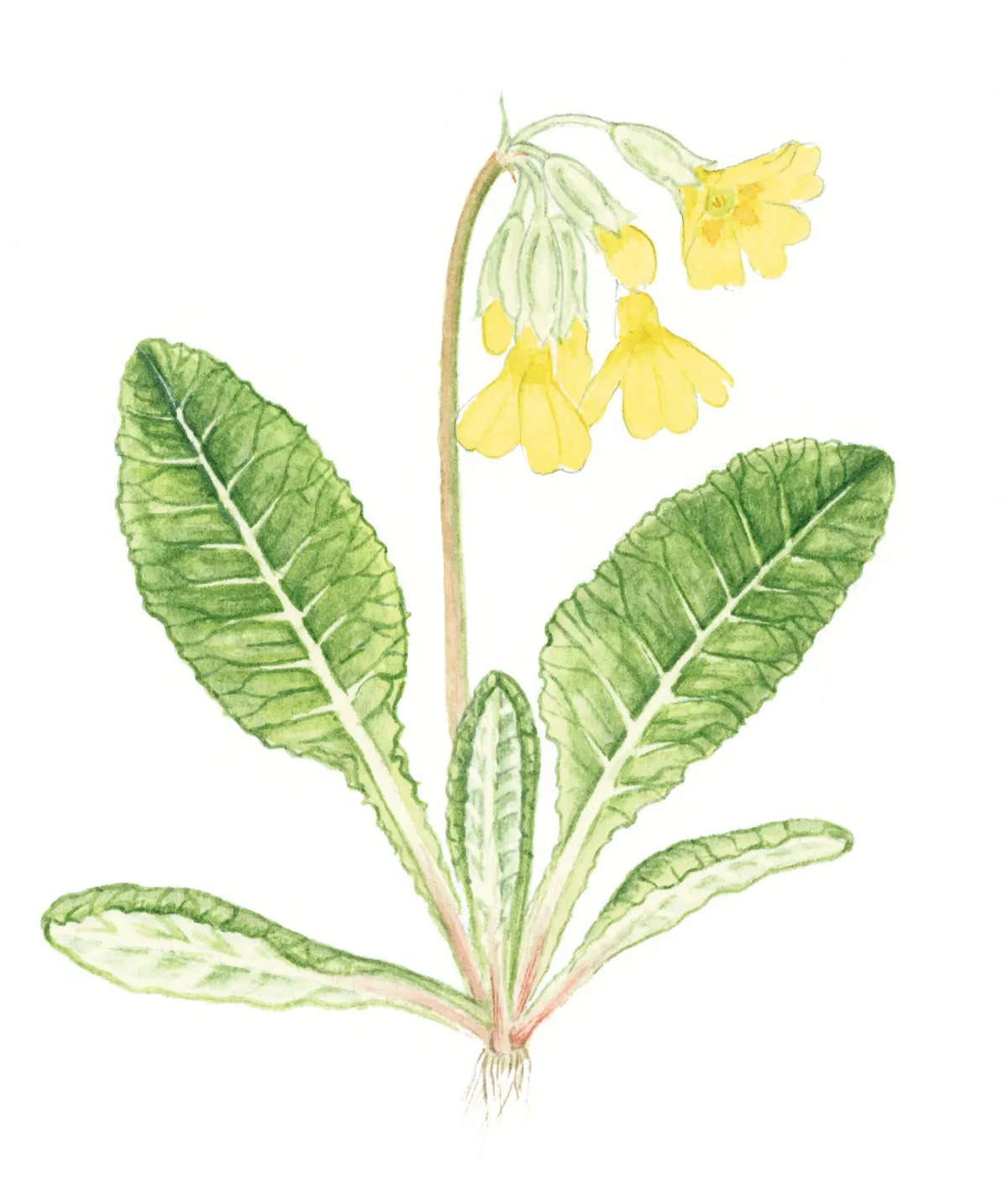
In appearance, an oxlip is a combination of a primrose and a cowslip: the paler, larger flowers of a primrose but drooping from a long, erect stem.
But watch out for false oxlips, Primula x polyantha! These really are a hybrid between primroses and cowslips, naturally occurring in areas where the two cohabit. However, it does not form carpets like oxlips and its stem is shorter.
Scarce: searching needed.
Greater stitchwort (Stellaria holostea)
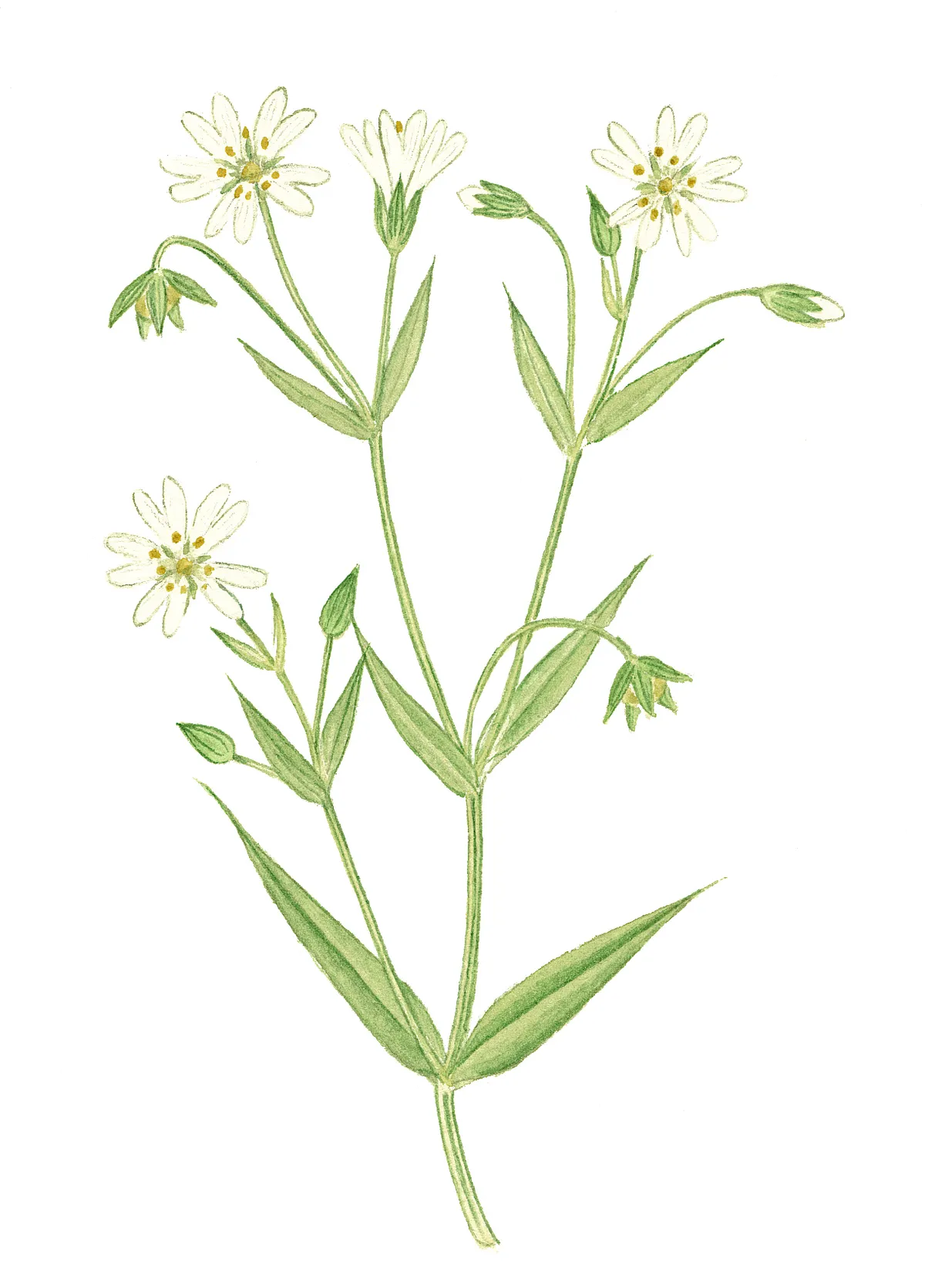
Frequented by bees, butterflies, hoverflies and moths, greater stitchwort is a rather straggly looking perennial with bright white flowers that adorn spring hedgerows, roadsides and woodland rides. Also called ‘star of Bethlehem’, this plant’s petals are indeed star-shaped and deeply notched.
Greater stitchwort is distinguished from lesser stitchwort by its much larger flowers and broader leaves.
It grows up to 50cm tall and is often found in acidic, heavy soils where it blooms from April to June. Listen out for its seed capsules popping in late spring.
Common and widespread.
Lesser stitchwort (Stellaria graminea)
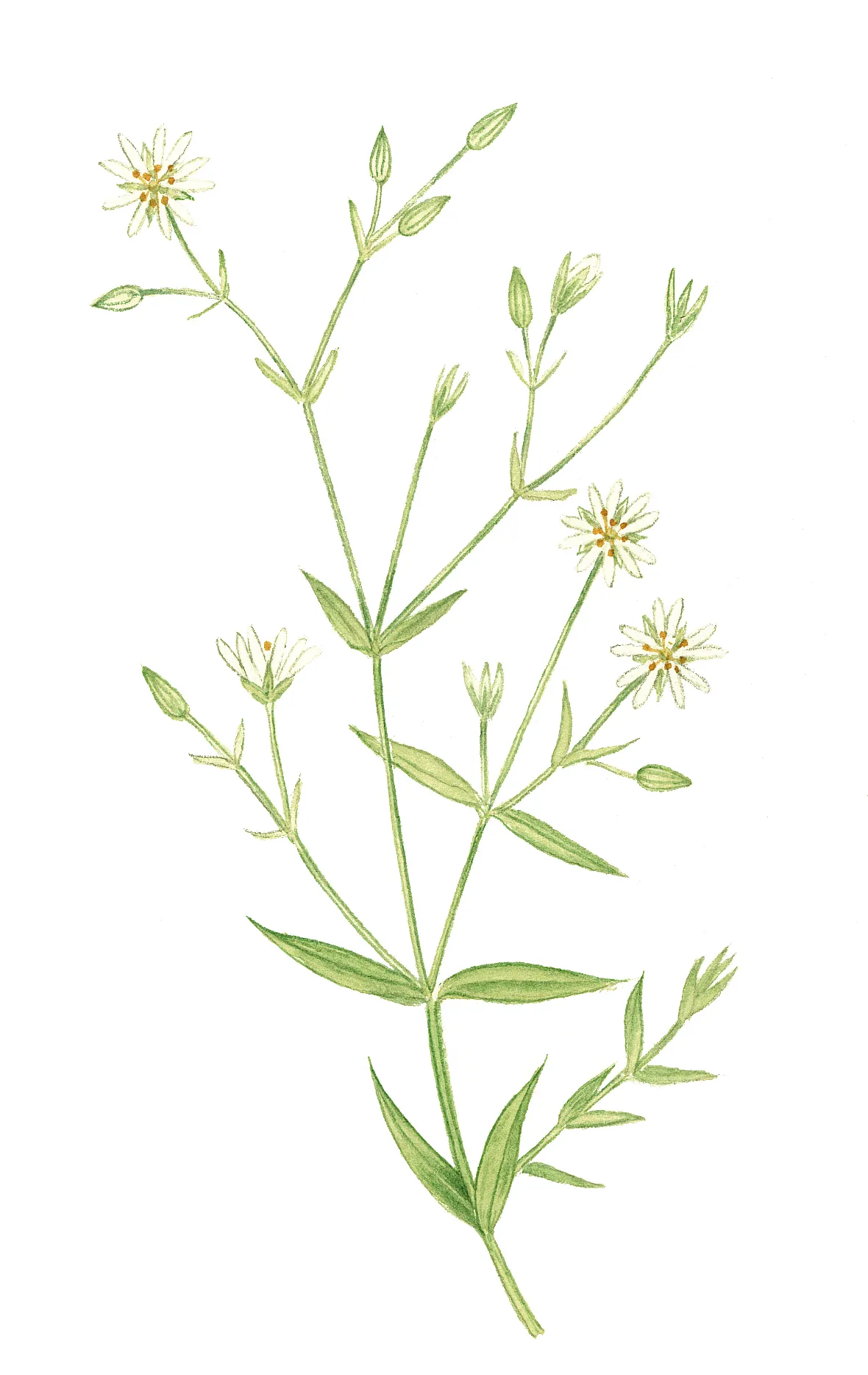
Like greater stitchwort, lesser stitchwort is found throughout Britain, but it has smaller star-shaped flowers (5-12mm rather than 15-30mm) that appear slightly later, from May to August.
Leaves are bright green, unlike the grey-tinged leaves of greater stitchwort, and it has a preference for slightly more well-drained acid soils. Find it on grasslands as well as roadsides and woodland rides.
Common and widespread.
Bugle (Ajuga reptans)
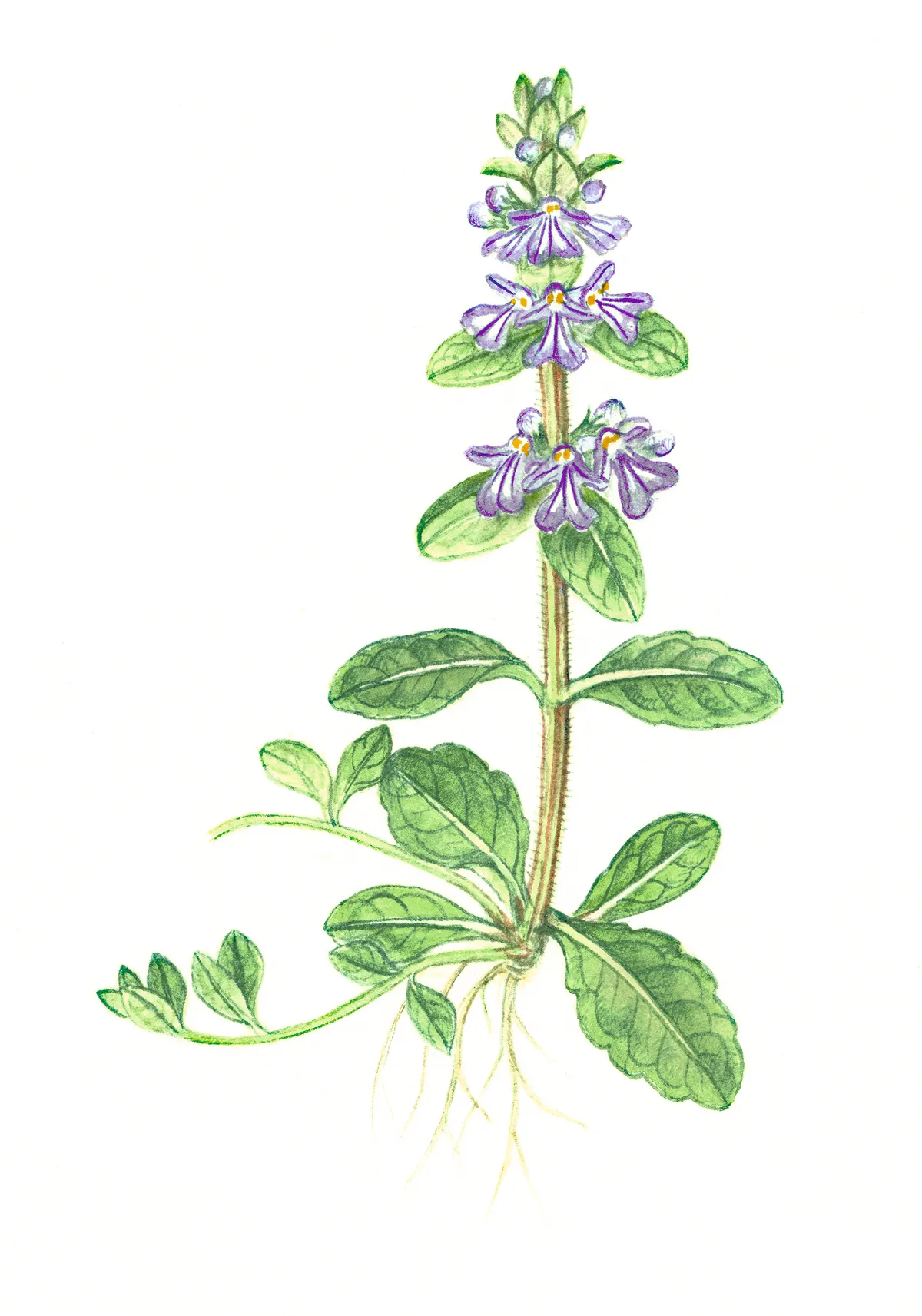
As commonly found in the garden as it is in woods and shady, grassy places, bugle is a low-growing perennial that forms mats, creeping along via long rooting runners.
Gardeners value it for its dark powder-blue flower spikes that reach 15cm and appear from April to July. Flowers are tiered up the spike along with purplish bracts. These emerge above dark, oval-shaped evergreen leaves that have a bronze tinge.
Local: easy to see in some spots.
Ground ivy (Glechoma hederacea)

Despite its name, ground ivy is actually a member of the dead-nettle family and not closely related to ivy at all. Typical to this rather aromatic group of plants, it has a strong smell – in fact, its leaves were once used as a bittering agent in beer, hence it being called ‘ale gill’ and ‘alehoof’ (among a host of other common names).
However, like ivy, it quickly spreads and forms evergreen patches via long creeping runners that can grow up to 1m long. Its verdant leaves are rounded, hairy and toothed.
Flowers bloom from March to June on stems up to 10cm high. They are most often violet-blue, but occasionally pink or white.
Common and widespread.
Sweet violet (Viola odorata)
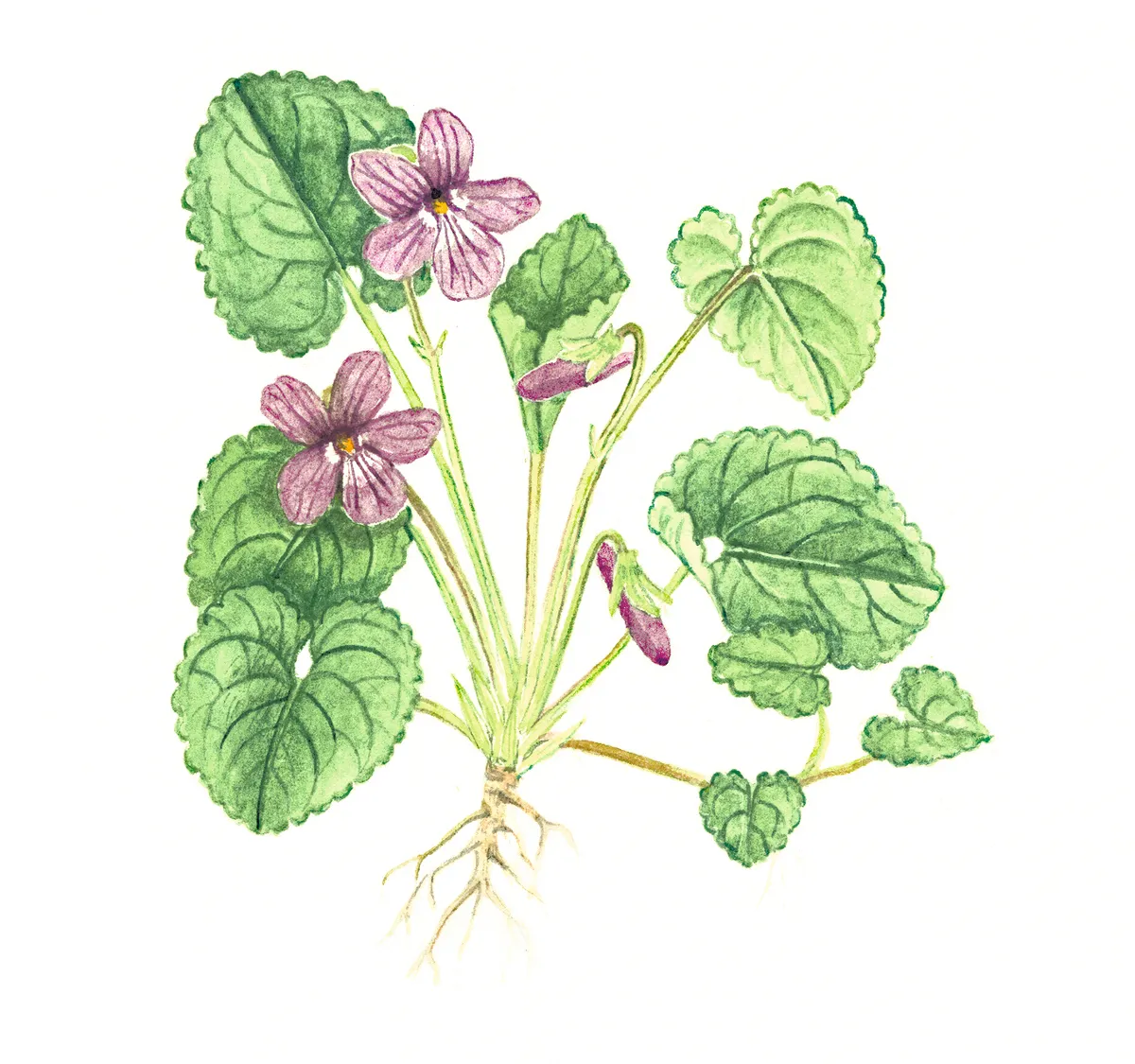
Look along woodland margins and shady hedge banks from March to May and you may spot the distinctly heart-shaped leaves (wider and rounder than the common dog violet leaves) and delicate little petals of this most romantic of spring wildflowers.

Our only fragrant violet, its slightly drooping flowers range from rich purple and pinkish-purple to white and stand on stems just 5-10cm high. It is a relative to the many popular violet and pansy garden cultivars.
Found creeping across mainly calcareous soils by long runners, you can see sweet violets across most of England, although it’s not as common in the north-west.
Common and widespread.
Early dog violet (Viola reichenbachiana)
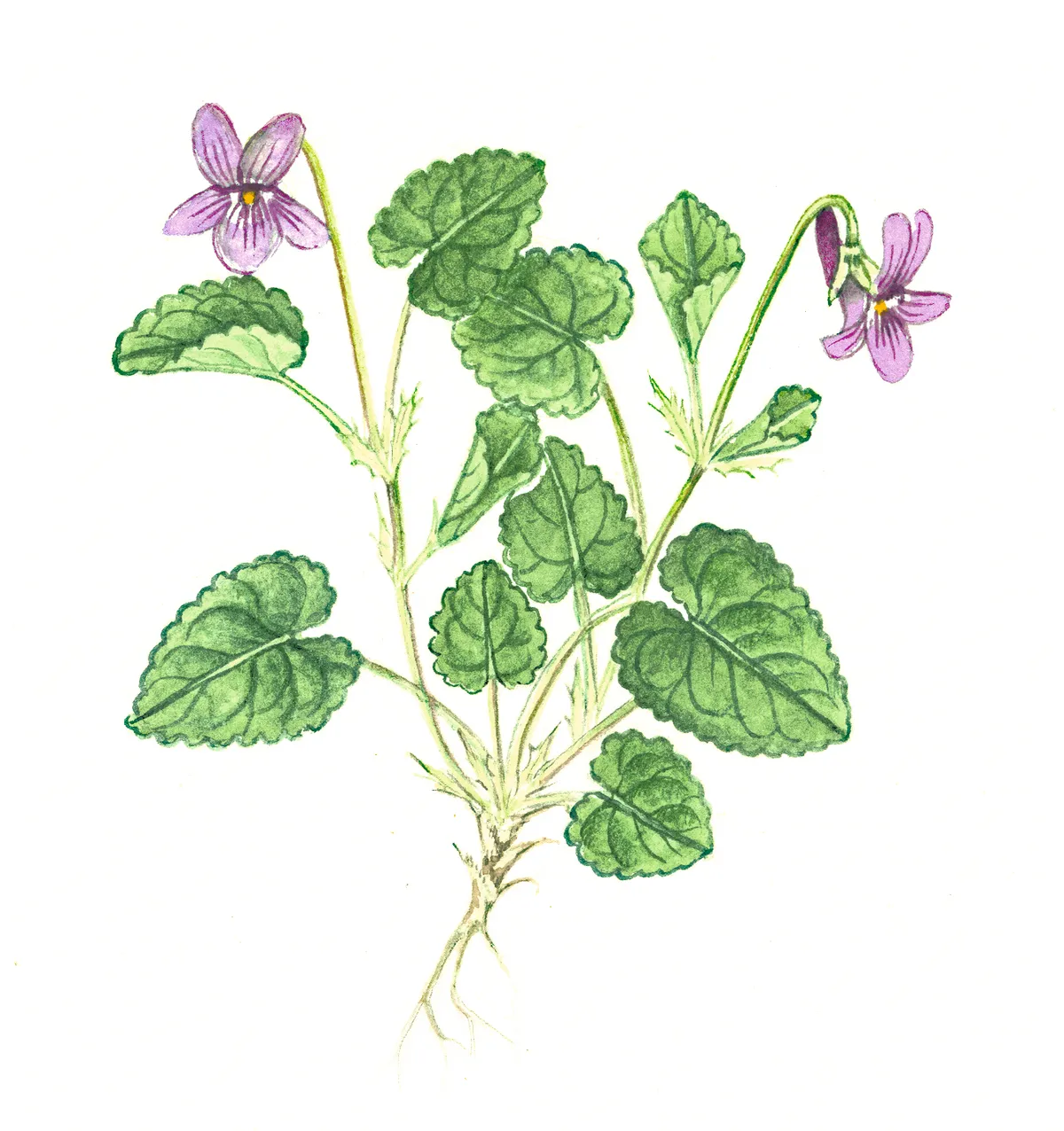
Also called the wood dog violet, this violet is the first of the violets to bloom, occasionally seen even earlier than March.
Found across central and southern England, like sweet violets and common dog violets it also dwells in woodlands and hedge banks. Flowers are slender and a pale lilac colour and leaves are longer than they are broad. Unlike sweet violets, they do not have runners.
Local: easy to see in some spots.
Common dog violet (Viola riviniana)
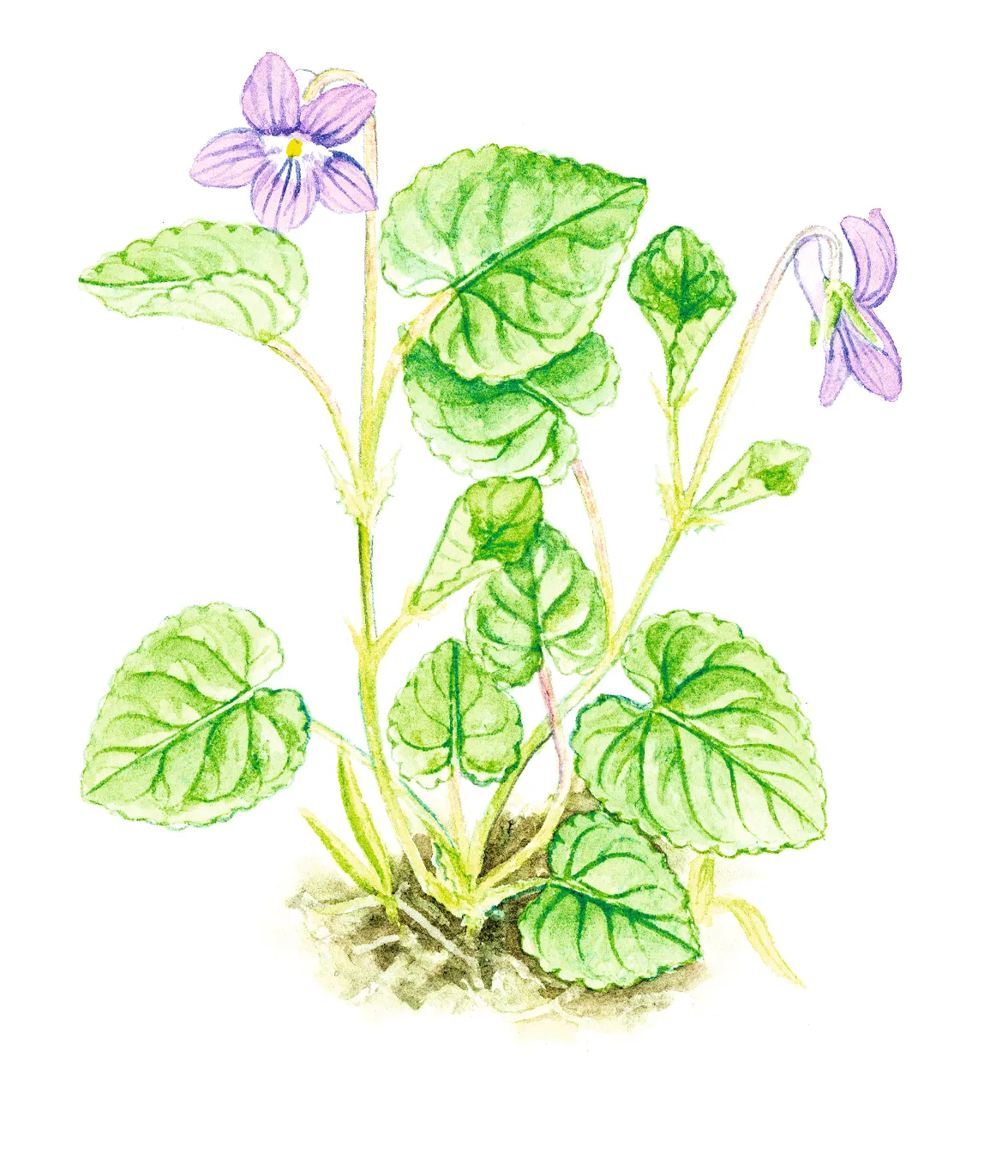
Purplish flowers. Leaves are narrower and more pointed than in sweet violet, with shorter stems.

Common and widespread.
Main image: Cowslip in flower. © Getty
